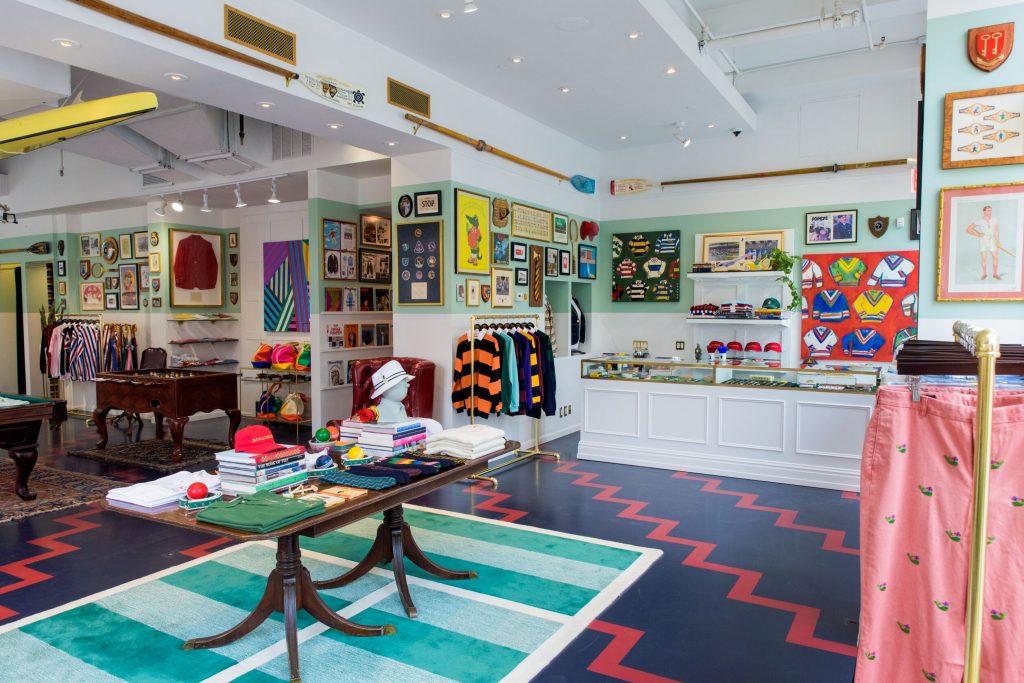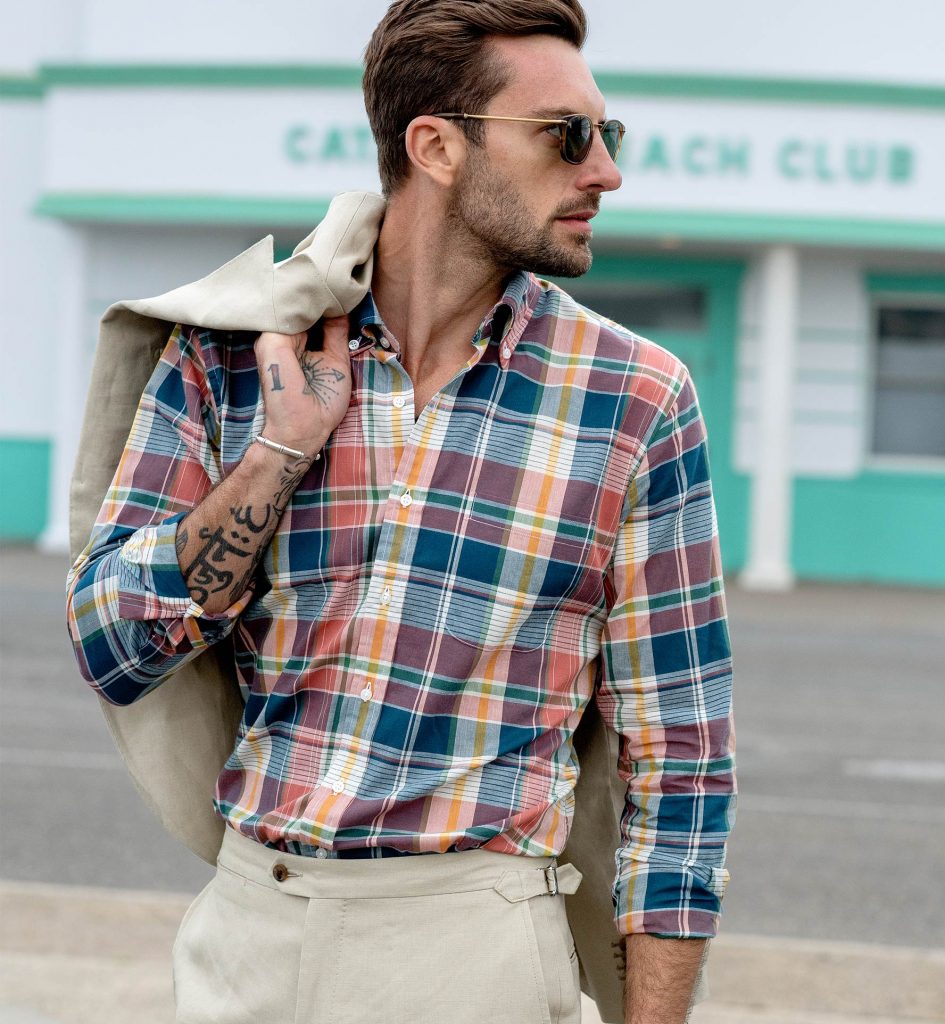
We’re really thankful to have sponsors who support our work. It’s because of them that we’re able to bring you content every day, so twice a month, we like to give them a special shoutout. Doing so also allows us to update our readers on our sponsors’ latest happenings.
Madras has been a summer staple for Ivy Style enthusiasts since the 1960s, back when Brooks Brothers bought bolts of leftover fabric and turned them into colorful shirts. But the fabric is originally from Chennai (formerly Madras), which is an Indian capital city. Back when India was a British colony and Scottish regiments were stationed there, the people of Chennai reinterpreted the Scottish tartans they saw using their own colors. The result is this colorful plaid — made of brilliant yellows, washed out blues, and dusty pinks — that was put onto the lightweight, loosely woven cotton fabrics designed for India’s hot and humid weather. In the United States, madras is basically your summer plaid. It’s bright, cheerful, and supremely comfortable on hot days.
Proper Cloth’s madras is the real deal. It was woven and hand-dyed in Chennai by people who have been making them for years. The fabrics come in a range of exclusive colors and patterns, which pair well with jeans and chinos, or can be used to help dress down a summer sport coat. If you’re unsure how to customize the made-to-measure shirt, consider a button-down collar (Proper Cloth’s Soft Ivy option has a fuller collar roll), single rounded shirt pocket, and regular placket front. It’s the most Ivy Style of casual shirt combinations.
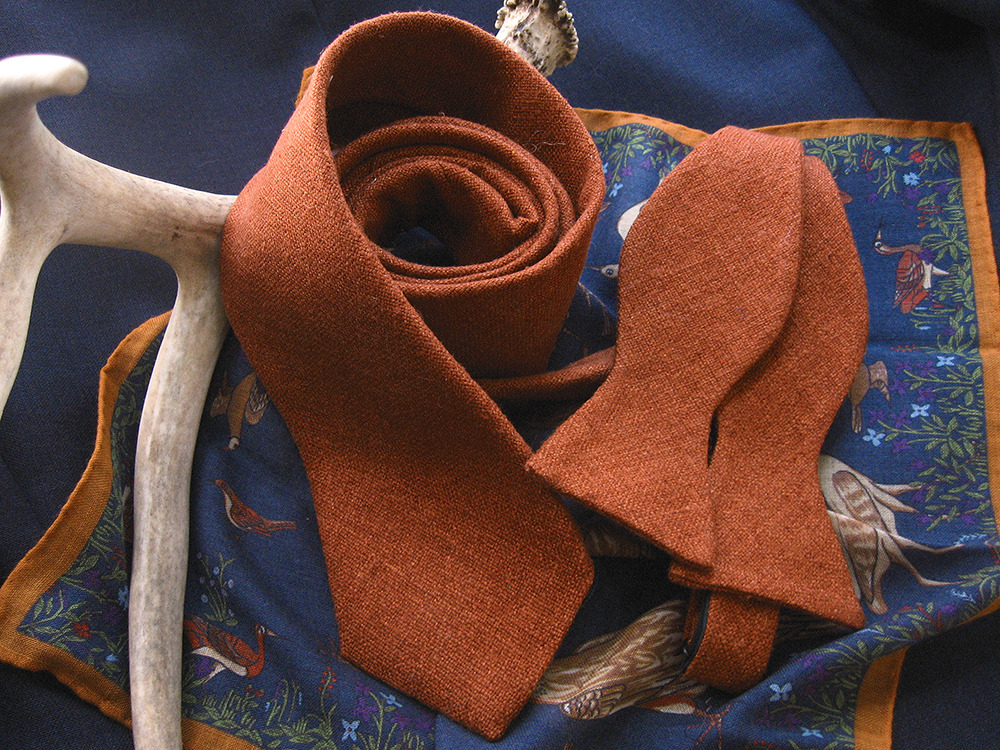
Chipp Neckwear is the most affordable source anywhere for custom neckties. They’re an old Ivy era clothier with their own workshop in New York City. Back in the day, they dressed everyone from President JFK to Andy Warhol to Joe Dimaggio. Since they have their own workroom, they can adjust any of their ties for a small $10 surcharge. Deviation from their standard stock ties can be handled by ordering one of their 60″ or 62″ ties on their site and then leaving a note in the comment section. For example, you can say you want a tie that’s 58″ long and 3.5″ wide, or something a little longer and narrower. Generally speaking, you want the length to be long enough so that the tip of your tie hits your belt when worn (and the back blade no shorter than 2″ away from the front blade’s tip). The width of your tie should then be in the general proximity of the width of your lapels (say, within a quarter of an inch). Production time for custom ties is two to three weeks.
Along with their wide range of grenadines, which are made from the same Italian silks used by their competitors, they also have some slubby Matka ties designed for summer. The rust one, pictured above, can be worn with more casual suits and sport coats in linen, cotton, and tropical wool. Like textured wool ties in the fall, they help add a bit of visual interest to a tailored outfit.
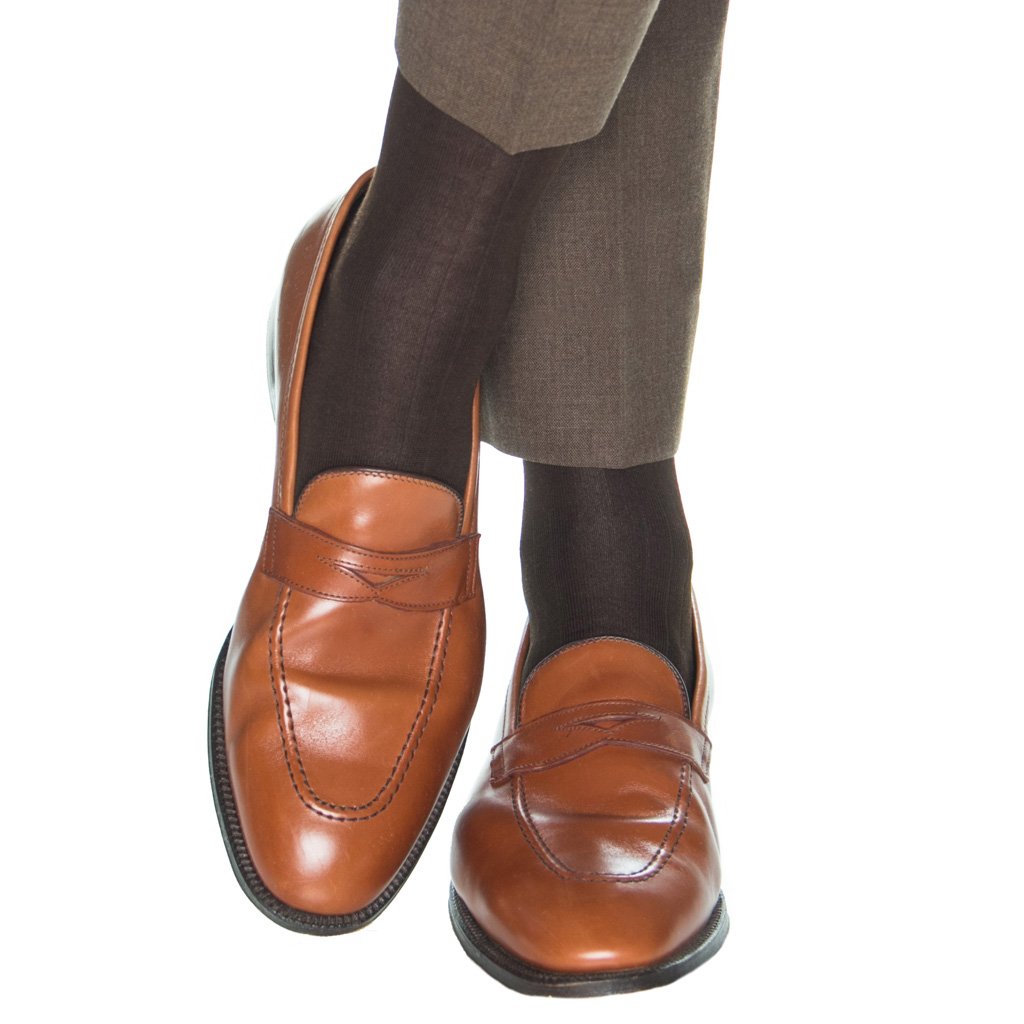
Dapper Classics has everything from tailored trousers to ties these days, but they’re most known for their socks. The socks are made from high-end cottons and wools, with the toes being hand-linked, rather than seamed, so they’re more comfortable. Most importantly, they come in every pattern and color you can imagine. For classic tailoring, you generally want your socks to match or at least complement your trousers. Brown trousers get brown socks; grey trousers get grey socks; and navy goes with everything. When in doubt, go one shade darker (see photo above). This visually extends your leg line and helps make your shoes look distinct from the rest of your outfit.
A summer favorite for them includes their cotton socks, which are made from a strong enough yarn that allows them to knit their socks with a slightly more open weave. This makes them summer cotton socks breathable, more comfortable, and cooler wearing, which is appreciatable on hot days. At the same time, the knit isn’t so open that the socks are sheer — and they’ll still hold their shape over multiple wears and washings. They’re such simple things, but can be a summer standby in your wardrobe if you don’t want to sweat it out in over-the-calf wool socks.
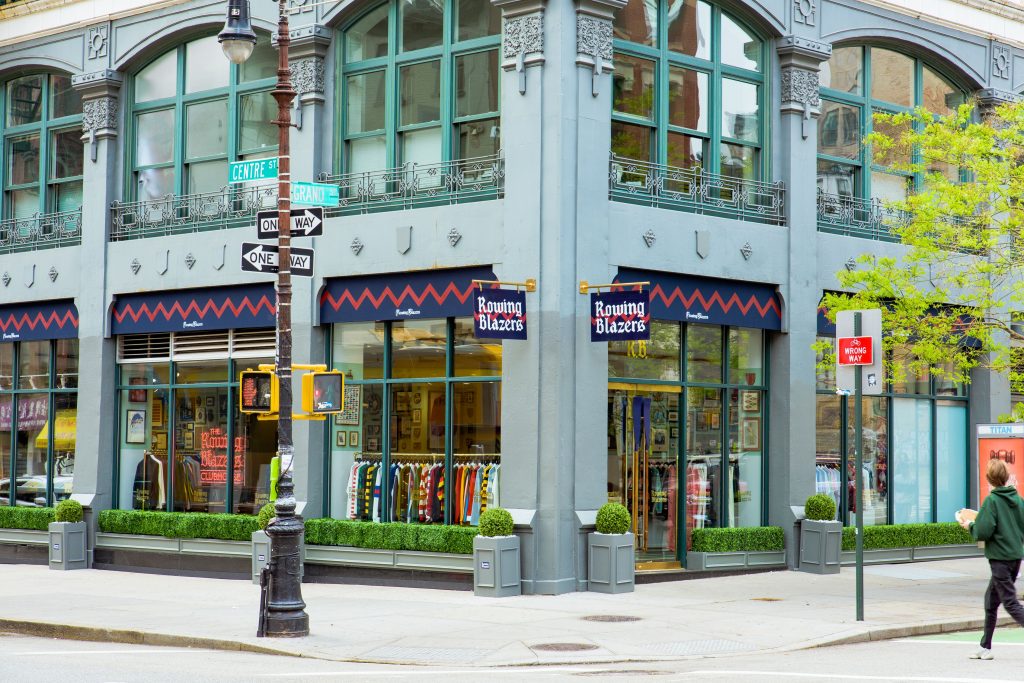
The Rowing Blazers Clubhouse opened its doors last summer for what was intended to be a three-month pop-up. At the time, the 1200 square foot space was too big for them, so they shared it with their friends Eric Emanuel and Tracksmith. As the summer went on, the corner of Grand and Centre started to feel like home. They extended the lease month by month by month, so they could stay a bit longer. And when the opportunity presented itself, they decided to turn what started as a pop-up into a real shop — their first and only Rowing Blazers flagship. Now after a month-and-a-half of renovating, they’re ready to open our doors again.
During its time as a pop-up, the Rowing Blazers Clubhouse has become a gathering place for an eclectic community. In updating their space, they’ve kept this purpose in mind. They added a vintage billiards table and throwback Streetfighter II arcade, as well as a new ping-pong table to their vintage Coke dispenser and much-loved foosball. The floor is now painted in their signature zigzag stripe; a single sculling boat hangs from the ceiling; and their walls are updated with new original pieces by Donald Robertson and Brian Nash.
Blazers and rugbies now sit alongside a wide range of new product including hoodies, crewnecks, and number tees. There’s stuff from Bowery Football Club, Sperry Cloud, Edith Young, Sugarloaf Social Club, Birdwell Beach Britches, Jessica Biales, and Dylan Decker. They’re also carrying a small but high-quality selection of vintage finds from founder Jack Carlson’s personal collection, as well as rare Rolex, Heuer, and Seiko watches from Foundwell and Wind Vintage. If you’re in New York City, you can drop by the new Rowing Blazers flagship store at 161 Grand.
